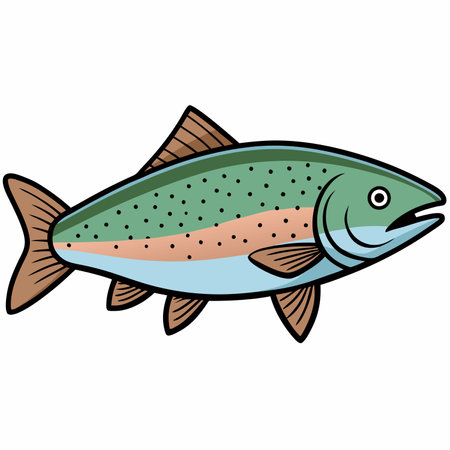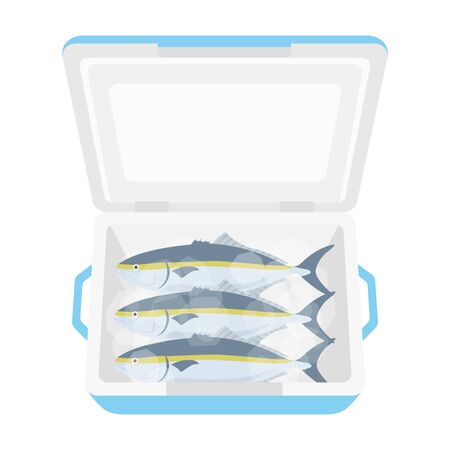1. Ice Augers and Drills
When it comes to ice fishing, the first step is always getting through that thick winter ice, and nothing does the job better than a reliable ice auger or drill. These tools are essential for cutting clean holes so you can drop your line and start fishing. Whether you’re new to ice fishing or looking to upgrade your gear, understanding the different types of augers and what to look for will make a big difference out on the lake.
Types of Ice Augers
There are two main types of ice augers: hand augers and power augers. Each has its own pros and cons, depending on your needs and how much ice you plan to drill through in a day.
| Type | Best For | Pros | Cons |
|---|---|---|---|
| Hand Auger | Casual anglers, thinner ice, lightweight travel | Quiet, affordable, lightweight, no fuel needed | Takes more effort, slower through thick ice |
| Power Auger (Gas/Electric) | Frequent anglers, thick ice, drilling multiple holes | Fast drilling, less effort, handles thick ice easily | Heavier, more expensive, requires fuel or batteries |
Choosing the Right Size Auger
The size of your auger matters—too small and you’ll struggle with larger fish; too big and you’ll be lugging extra weight all day. Most anglers find that an 6-inch or 8-inch diameter works best for panfish, walleye, and trout. If you’re chasing bigger game like pike or lake trout, a 10-inch auger gives you that extra space.
| Auger Diameter | Target Fish Species | Recommended Use |
|---|---|---|
| 6 inches | Panfish (bluegill, perch) | Lightweight setup; easy transport; thinner ice |
| 8 inches | Walleye, trout, bass | All-purpose; covers most situations on the ice |
| 10 inches | Pike, lake trout, trophy fish | Bigger holes for bigger fish; requires more effort/power |
Safety Tips for Drilling in Various Ice Conditions
- Check Ice Thickness: Always make sure the ice is at least 4 inches thick before drilling. For groups or heavier equipment, aim for 5-7 inches.
- Avoid Weak Spots: Stay away from areas with flowing water or visible cracks—ice can be thinner there.
- Pace Yourself: Take breaks when using hand augers to avoid fatigue. With power augers, keep an eye out for exhaust if using gas models.
- Bring a Buddy: It’s safer (and more fun) to drill with a friend who can help if something goes wrong.
- Cleans Up Your Holes: Clear away slush so nobody trips or slips near your fishing spot.
2. Shelters and Warm Clothing
Stay Warm on the Ice: Shelters, Suits, and Smart Layering
If you’re planning to fish through the heart of a Midwest or Northern winter, having the right shelter and clothing isn’t just about comfort—it’s about safety. Freezing winds and biting temps are no joke, so let’s break down what you’ll need to stay warm and focused on catching more fish.
Portable Ice Fishing Shelters
Modern ice fishing shelters come in all shapes and sizes, from simple pop-ups to heavy-duty flip-overs. They’re designed to be easy to transport and set up, even when you’re wearing gloves. Here’s a quick look at common types:
| Shelter Type | Main Features | Best For |
|---|---|---|
| Pop-Up Hub Shelter | Lightweight, quick setup, roomy inside | Groups or family outings |
| Flip-Over Shelter | Built-in sled base, fast mobility | Solo anglers or frequent movers |
| Windbreak Shelter | No floor, blocks wind only | Mild days or extra coverage for gear |
Look for insulated models if you fish in sub-zero conditions—these hold heat better and cut down on condensation.
Insulated Outerwear: Parkas and Bibs
A good ice fishing suit is your first defense against the cold. In the U.S., many anglers trust brands like Striker, Clam, and Eskimo for suits that combine waterproofing, flotation (for safety), and plenty of pockets. When shopping for outerwear, consider:
- Parka: Long-cut jackets with thermal insulation and windproof material.
- Bibs: Insulated overalls that cover your legs and core for full-body warmth.
- Waterproofing: Essential for keeping dry from both snow and slush.
- Flotation Technology: Some suits offer built-in flotation for extra safety on early or late season ice.
Dressing in Layers: The Right Strategy for Comfort
The key to staying warm is layering. Start with a moisture-wicking base layer (think synthetic or merino wool), add an insulating mid-layer (like fleece), then finish with your insulated outerwear. Here’s a basic guide:
| Layer Type | Purpose | Recommended Materials |
|---|---|---|
| Base Layer | Pulls sweat away from skin | Synthetic, merino wool |
| Mid Layer | Adds warmth; traps heat | Fleece, wool sweater, down vest |
| Outer Layer | Blocks wind & moisture; insulates further | Insulated parka/bib with waterproof shell |
Topping Off: Hats, Gloves, Boots, and Accessories
No outfit is complete without warm accessories. Go for insulated boots rated for extreme cold (look for “-40°F” tags), wool socks (never cotton), thick gloves or mittens, a windproof hat that covers your ears, and a neck gaiter or balaclava. Hand warmers are also popular among American ice anglers—toss a few in your pockets for instant heat when things get frosty.

3. Rods, Reels, and Line Selection
Choosing the Right Ice Fishing Rods
When it comes to ice fishing, your rod is your lifeline to what’s happening below the ice. Ice rods are much shorter than open-water rods—typically between 24 and 36 inches—so you can fish comfortably inside an ice shelter or out in the open. Here’s a quick breakdown of popular rod types for different species:
| Rod Power | Best For | Typical Species |
|---|---|---|
| Ultra-Light/Light | Small jigs & finesse lures | Panfish (bluegill, crappie, perch) |
| Medium | Larger jigs & spoons | Walleye, trout |
| Medium-Heavy/Heavy | Big baits & aggressive hooksets | Northern pike, lake trout |
Selecting Ice Fishing Reels
Most anglers go with spinning reels for their versatility and ease of use. Choose a reel that matches the size of your rod and target species. Look for models rated for cold weather—they’ll have smooth drags and won’t freeze up as easily. Inline reels are another solid option if you’re into ultra-finesse panfish tactics or want to avoid line twist.
Quick Reel Tips:
- Smooth Drag: Essential for fighting larger fish through the hole.
- Cold Weather Lubricants: Prevents sticking in freezing temps.
- Bearing Count: More bearings usually mean smoother performance.
Ice Line Basics: Monofilament vs. Fluorocarbon vs. Braid
Your line choice can make or break your day on hard water. Here’s how they stack up:
| Line Type | Main Benefits | Best For |
|---|---|---|
| Monofilament | Stretch, easy handling, affordable | Panfish, general use, beginners |
| Fluorocarbon | Abrasion resistance, low visibility underwater | Walleye, finicky biters, clear water |
| Braided Line (Ice-Specific) | No stretch, high strength-to-diameter ratio, sensitive feel | Pike, lake trout, deep water applications |
Tackle Setup Tips for All Species:
- Panfish: Pair an ultra-light rod with a sensitive tip and 2–4 lb test mono or fluoro line.
- Walleye: Medium power rod with 6–8 lb fluorocarbon is a go-to combo for jigging or using live bait.
- Northern Pike/Lake Trout: Medium-heavy rod matched with a robust spinning reel and 10–20 lb braid (with a fluorocarbon leader) handles those toothy critters and big runs.
- Tune Your Drag: Set it loose enough so you don’t snap off but tight enough to set the hook cleanly—especially important in icy conditions!
4. Tackle and Bait Essentials
When it comes to ice fishing on American lakes, choosing the right tackle and bait can make all the difference in getting more bites. Let’s break down the must-haves for your winter fishing adventures, from jigs and spoons to live bait and plastics. Plus, we’ll talk about smart ways to keep your tackle organized and ready whenever you hit the ice.
Must-Have Tackle for Ice Fishing
| Tackle Type | Best For | Why It Works |
|---|---|---|
| Jigs | Panfish, Walleye, Trout | Versatile, easy to tip with bait, great for vertical jigging. |
| Spoons | Northern Pike, Lake Trout, Perch | Mimics injured baitfish, attracts fish with flash and vibration. |
| Live Bait (Minnows, Waxworms) | Crappie, Bluegill, Perch, Walleye | Natural scent and movement trigger more strikes. |
| Soft Plastics | Panfish, Bass, Trout | Durable, come in many shapes/colors to match local forage. |
Bait Tips for More Strikes
- Jig Tipping: Add a waxworm or minnow head to your jig for extra scent and action.
- Spoon Jigging: Use a snap-jigging motion to make spoons flutter like wounded fish.
- Plastic Pairing: Match soft plastic colors to the water clarity—brighter colors for murky water, natural tones for clear lakes.
- Live Bait Storage: Keep minnows lively by using an insulated bait bucket with aeration.
Tackle Storage Solutions
Staying organized is key when you’re out on the ice. Here are some popular options American anglers love:
- Tackle Boxes: Classic hard cases with adjustable compartments for jigs, spoons, and hooks.
- Bait Pucks: Small round containers perfect for waxworms or spikes—fit easily in jacket pockets.
- Sleeve Organizers: Soft zippered sleeves keep plastics sorted by color or style.
- Bags & Backpacks: Insulated soft bags carry all your gear while keeping things accessible and protected from cold temps.
Quick-Grab Packing List for American Ice Anglers:
- A variety of jigs (different sizes/colors)
- A couple of favorite spoons (silver/gold/UV)
- A selection of live bait (check local regulations!)
- Packs of soft plastics matched to target species
- Tackle box or pouch for quick access on the ice
- Bait puck or small insulated bucket for live bait storage
5. Electronics and Tech Upgrades
Modern ice fishing isn’t just about patience—it’s about having the right technology to up your odds. Whether you’re a seasoned angler or just getting started, electronics can make your ice fishing trips more productive and a lot more fun. Here’s a look at the top gadgets you’ll want on the ice this winter.
Key Ice Fishing Electronics
| Gadget | Main Use | Best For | Top Recommendation |
|---|---|---|---|
| Flasher | Real-time sonar display to show fish below the ice | All skill levels | Vexilar FL-8SE or Humminbird ICE Helix 5 |
| Underwater Camera | Live video feed of what’s happening under the ice | Curious anglers, families, beginners | Aqua-Vu Micro Stealth 4.3 or Marcum Recon 5+ |
| Portable Sonar/Fish Finder | Detects fish depth and structure; often connects to smartphones | Tech-savvy anglers, mobile fishing | Deeper PRO+ Smart Sonar or Garmin Striker 4 Portable Kit |
Why Upgrade Your Ice Fishing Tech?
Easier Fish Location: Flashers and portable sonars give you a quick read on where fish are hanging out, so you spend less time guessing and more time catching.
Track Every Bite: Underwater cameras don’t just show fish—they let you see how they react to your bait, which is great for learning and adjusting your tactics.
User-Friendly for All: Many of today’s devices are super easy to use, with clear displays and smartphone connectivity. Even if you’re new to ice fishing, you’ll pick it up fast.
Pro Tip:
If you’re fishing with kids or first-timers, an underwater camera adds excitement. Watching fish swim by (and strike!) is a thrill that keeps everyone engaged.
What to Look For When Buying:
- Batteries: Make sure your gear lasts all day in cold temps—lithium batteries hold up best.
- Portability: Lightweight and compact models are ideal for moving between holes.
- Durability: Choose electronics built to handle freezing temperatures and rough use on the ice.
- User Interface: Simple controls and easy-to-read screens make a big difference, especially with gloves on.
The right tech upgrades can turn any ice fishing trip into a successful adventure—no matter your experience level. With these gadgets in your gear bag, you’ll be ready to find, watch, and catch more fish all winter long!
6. Safety Equipment and Best Practices
Essential Ice Safety Tools for Every Angler
When youre gearing up for ice fishing, staying safe is just as important as catching fish. The right safety equipment can make all the difference, especially when you’re out on unpredictable winter ice. Here are some must-have ice safety tools for your next outing:
| Safety Tool | Why You Need It |
|---|---|
| Ice Picks | If you fall through the ice, these sharp tools help you grip the edge and pull yourself out quickly. |
| Flotation Device | A float suit or life vest keeps you buoyant if you break through thin ice. |
| Spud Bar | This heavy metal bar helps you check the ice thickness ahead as you walk—one solid hit at a time. |
How to Gauge Safe Ice Thickness
Before setting up your shack or drilling holes, always check the thickness of the ice. Here’s a simple guide:
| Ice Thickness | Safe For |
|---|---|
| 4 inches | Walking solo (foot traffic) |
| 5-7 inches | Small groups or ATVs/snowmobiles |
| 8-12 inches+ | Cars or small trucks (but always double-check local guidelines!) |
Tried-and-True Ice Fishing Safety Tips
- Never fish alone if possible: Bring a buddy, or let someone know where youll be and when you plan to return.
- Pace yourself: Use your spud bar to test every few steps, especially early and late in the season.
- Avoid pressure ridges and moving water: These spots usually have thinner or unstable ice.
- Cary a throw rope: In case someone else falls in, you can help from a safe distance.
- Dress for the cold: Layer up with moisture-wicking clothes and waterproof outerwear to stay warm and dry.
7. On-the-Ice Comfort and Extras
Ice fishing isnt just about the right rod or bait—its also about staying comfortable and making those long, chilly hours on the ice enjoyable. Smart anglers know that a few creature comforts can make all the difference between a fun outing and a miserable one. Here’s what you need for comfort and convenience while ice fishing in the U.S.
Stay Warm with Portable Heaters
Portable propane heaters are a game-changer for keeping your ice shelter toasty. Always look for models rated safe for indoor use and remember to ventilate your shelter for safety. Popular brands like Mr. Heater Buddy are favorites among American anglers for their reliability and ease of use.
Seating: Don’t Stand All Day
No one wants to stand for hours in freezing temps! Folding chairs or padded bucket seats provide much-needed comfort while you wait for a bite. Some anglers even use insulated seats that double as storage bins for tackle or snacks.
Popular Seating Options
| Type | Features | Best For |
|---|---|---|
| Padded Bucket Seat | Insulation, doubles as storage | Short trips, light gear loads |
| Folding Camp Chair | Lightweight, portable | Longer stays, extra comfort |
| Sled Bench | Bigger, holds more gear/people | Group outings, heavy equipment |
Sleds: Move Your Gear with Ease
An ice sled is essential for hauling your shelter, rods, auger, heater, and all those extras across frozen lakes. Look for rugged plastic sleds with high sides to keep everything secure. Many folks in the Midwest and Northeast swear by brands like Otter or Jet Sled for their toughness and capacity.
Snacks & Hydration: Fuel for the Cold
No one wants to fish hungry! Pack high-energy snacks like jerky, trail mix, granola bars, or even hot soup in a thermos. Don’t forget an insulated mug of coffee or cocoa—nothing beats sipping something warm while you watch your lines.
Recommended Ice Fishing Snacks Table
| Snack Type | Why It’s Great |
|---|---|
| Beef Jerky | Protein-packed, non-perishable |
| Granola Bars | Quick energy, easy to pack |
| Nuts & Trail Mix | Healthy fats, filling & portable |
| Thermos Soup/Cocoa | Keeps you warm and satisfied |
A Few More Extras Worth Considering:
- Hand warmers: Toss them in your gloves or boots for instant heat.
- Pocket flashlight/headlamp: Essential if you arrive before sunrise or leave after sunset.
- Tackle box organizer: Saves time so you can focus on fishing, not fumbling with gear.
- Cell phone power bank: Stay connected (and safe) all day long.
- Tow rope: Handy if your sled gets stuck or you need to help a buddy out.
Add these comfort items to your ice fishing checklist and youll be ready to enjoy every moment on the ice—no matter how cold it gets!


